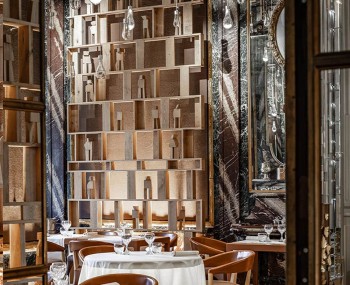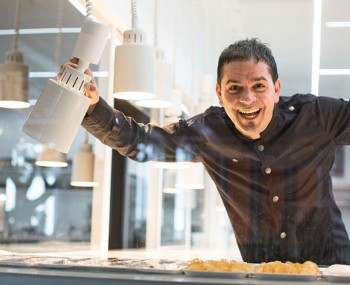In Tokyo's elegant Ginza district, there is a traditional cuisine restaurant that employs only women in their 20s. It is run by Atsumi Saito, who organizes poetry and choir classes for her girls. "With them it is easier to teach beginners; the relationships are not hierarchical, but friendly."
The news
Japan is not the home of feminism: patriarchal culture is ingrained even in the restaurant industry, where all or most sushi chefs, to take one example, wear pants. The exception is in Ginza Namiki-Dori, Tokyo's upscale shopping street, Tsuru to Kame, a Kappo cuisine restaurant, or direct and informal, somewhere between kaiseki and izakaya, the Japanese tavern. In fact, its brigades have always consisted only of women, a dream come true for the owner, who has already led numerous establishments.

Today, leading the kitchen is the second generation of "shef," in the person of Atsumi Saito. The rooms are traditional Japanese restaurant settings, with the ceiling made of wooden strips and the walls covered with the classic clay roofing. Here a long horseshoe-shaped counter allows visitors to watch the cooks' performances, cut out of the open kitchen window.

Saito, the daughter of a chef in the same group, has worked at the restaurant since it opened and was appointed its chef in 2022. Her beginnings were not easy: the eldest of five siblings, she always dreamed of cooking with her father, but she soon clashed with the machismo of the industry, ending up relegated to performing the most menial and mechanical tasks. "My superiors probably considered female staff too emotional and didn't know how to handle them," she told to Kyoko Nakayama, who recounts her rise on guide.michelin.com. "One thing I've noticed from leading an all-female team is that it's easier to take care of junior staff. Relationships tend to become friendship-like, rather than structured according to the rigid hierarchies of male-dominated brigades."

The offerings include two omakase menus, or carte blanche, based on seasonal ingredients. They start with appetizers (hassun), served at the table with a sheet of traditional paper (washi) bearing an unrepeatable composition, created by a staff member and penned with a paintbrush by Saito, to introduce the proposal and fuel conversation. Fetish ingredients such as ice fish or firefly squid often appear there, in order to emphasize seasonality and attune the guest to nature.


To strengthen team spirit and propitiate knowledge sharing, Saito organizes classes after the morning mise-en-place, which may cover the tea ceremony, calligraphy, composing haiku or the more extensive tanka, reading history books, singing in a choir, or the English language. In all cases, it is a matter of representing Japanese cuisine as part of the national culture and artistic heritage, to encourage its transmission to future generations. "We want to instill a sense of the 24 micro-seasons as part of our traditions. All of the staff members are in their 20s, in all cases under 30, and are cultivating dreams of opening their own restaurant."











